Five architecture and design firms envision post-pandemic professional landscapes.
By Gabrielle Golenda February 17, 2021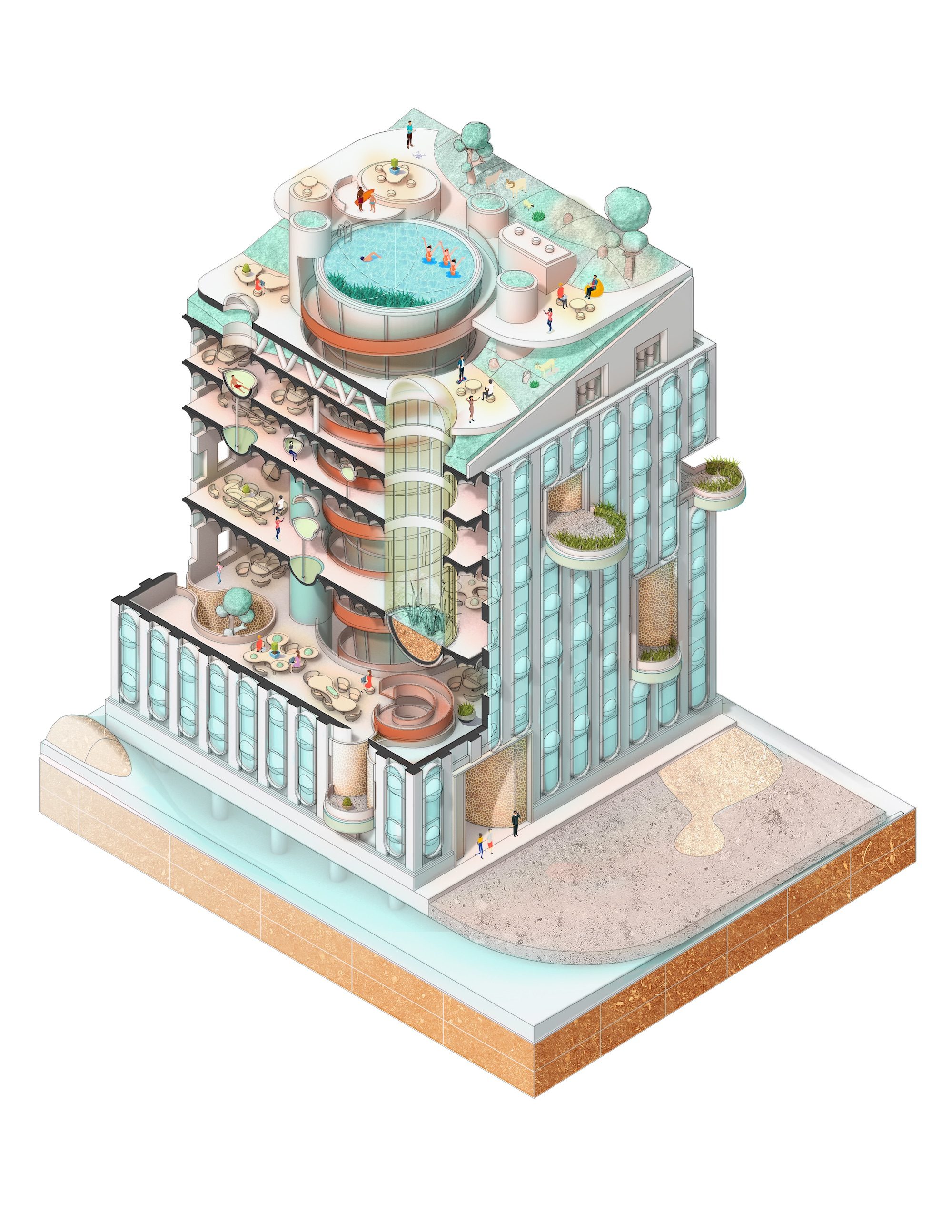
WOLFGANG + HITE’s office takes what we learned from COVID-19 and looks to the next urgent crisis of rising global temperatures. …
Deemed the most outdoorsy headquarters ever, REI’s so-called summer camp for adults was maybe too good to be true. The multinational firm NBBJ outfitted the eight-acre campus with fire pits, rooftop terraces, sliding glass doors, exterior staircases, passageways, skylights, and thoughtful landscaping, including blueberry bogs, that reference the site’s agricultural past. A multitude of interconnected workplaces with modular features blurred the lines between nature and the built environment.
Before REI could even move in, however, the brand announced it was selling its new home in Bellevue, Washington, and shifting to remote work to better align with the paradigm shift the coronavirus pandemic drastically accelerated. (Facebook bought the building this past fall for $368 million.) Despite its rejection of traditional office tropes—the lackluster and distracting open office, the hierarchical tendencies of cubicles—REI’s innovative indoor-outdoor office model already feels obsolete. Will there still be a need for sprawling campus HQs in the “new normal?”
Most companies are still trying to figure out what the future holds. Facebook, Twitter, Zillow, and Square are just a few of the bold-faced names that have announced indefinite work-from-home policies. We know that work will become more localized, but despite the possibilities presented by newfound flexibility, the prevailing view is that people will still need human-to-human connection and, therefore, workspaces will be progressively dispersed across spatial typologies as sundry hybrid approaches emerge.
Salon Alper Derinbogaz recently revealed a “pandemic-resistant” design for Istanbul’s Yıldız Technical University that takes cues from Laugier’s Primitive Hut, with the integration of outside areas and landscaping, and protected yet fluid meeting zones; Perkins + Will imagines pop-up meeting spaces for group collaboration, with focused work taking place at home; while Woods Bagot’s The Working from Home, Working from Work concept takes a multifarious approach, proposing four models ranging from decentralized community nodes to collectives within a larger office context to smaller flex spaces with rotating teams.
As amorphous and unsure as the debate over the future of work is, it’s only one part of a much larger conversation surrounding COVID-19’s impact on urbanism. With city dwellers no longer tethered to their high-paying desk jobs in places like New York and San Francisco, an exodus to the suburbs and second cities driven by the need for open space and a movement to reconnect with nature has pushed us to reevaluate quality of life. Guallart Architects’ Self-Sufficient City—a housing development concept outside of Beijing with its own circular bio-economy, including greenhouses for growing food, solar-paneled roofs, and “co-working digital factories” equipped with 3D printers to make household items in case of supply chain disruption—is one of the many ideas we’re bound to see as the world processes the lessons from the pandemic.
So what will work look like after coronavirus? We asked five leading architecture and design firms to envision the post-pandemic professional landscape. Is the physical workspace a thing of the past? If not, maybe it will take on the look of a members’ club. Is Karim Rashid’s DISC lamp the solution to protect us from sickness during meetings? Perhaps all we need is the fresh air provided by shared public areas and parks like WEISS / MANFREDI suggests. Some form of the flex model, which Montalba Architects proposes, seems to be an emerging prognostication in the design industry. But the truth is, nobody knows what pandemic’s long-term impact on work is going to be. One thing we know for sure: work will never be the same.
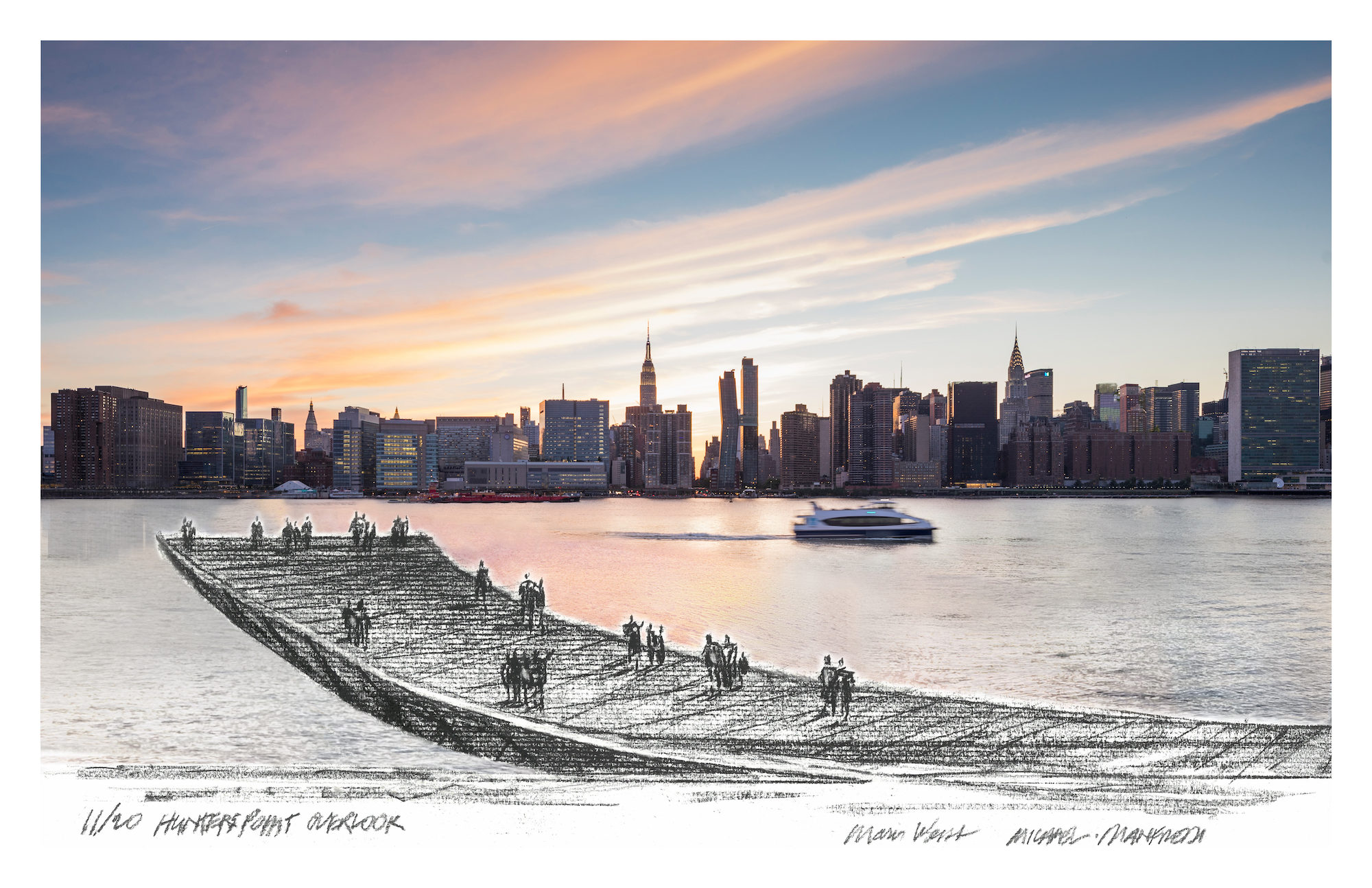
We believe the future of work will be liberated by the discoveries surfaced during this pandemic. As we have discovered the nomadic potential of the virtual desktop, we believe the boundaries of the office can be recast to include the urban horizon. We imagine a place where work and play together can redefine the location of the office of the future. We imagine a place of work where light and air, inside and outside, collaborate to create new places for both focused and collaborative work.
As the idea of the workplace is in question, we discovered that the Overlook we designed at Hunters Point South Park and has become a place of work, an alternative to the claustrophobic boundaries of home and the monotonous flatness of the specificity of the office. Here we see workspaces dissolve into spaces of health and recreation; the Park, its Overlook, and Pavilion have become alternatives to the traditional office, recognizing that our creative potential needs access to the horizon and room to breathe.
Our future office takes what we learned from COVID-19 and looks to the next urgent crisis of rising global temperatures. As the outside world becomes more and more inhospitable to humans, spaces will have to better manage rising temperatures while balancing the changing demands of workers. We’ve retooled a prototypical existing New York mid-rise office building by carving exterior space into the facade, defining the interiors with organic acoustic materials, and bringing rain-captured thermal water mass to slow heat loss and reduce energy consumption. For further energy savings, the “business casual” of inhabitants within becomes shorts and tank tops. A non-hierarchical office plan is augmented by “zoom pods” that allow individuals to enter acoustically and visually isolated environments within an open format. These pods can also be sleep pods for napping, spontaneous acoustic meeting rooms, and dinner parties so that the workplace can accommodate more of life’s activities than work alone.
While pre-pandemic offices focused on expansive, open-air spaces that create casual, communicative environments, post-pandemic we see a paradigm shift toward polycentricity with resilient, flexible hubs rather than permanent, large offices. Static spaces are becoming obsolete as adaptable, modular systems absorb a vast array of upcoming potential changes affecting the human habitat.
The collective argument of a fully remote office undermines the value of camaraderie and culture that comes from being within an office space. With a polycentric system, offices would work as a hub, or a working dock, able to receive staff both individually and collectively. While some flexible and adaptable spaces can seem unwelcoming, architectural design and thoughtful actions toward developing an overall identify of these hubs will offer its users a sense of community and belonging.
We propose the detachment of the traditional extensive rational layout of the office and the creation of a Cartesian device over the extension of the isotropic space. This device will provide support for multiple layers, layouts, technical systems, and tools enabling its productive use. It will serve as a digital hub for the user to connect to a data cloud functioning as a physical portal to an expanded virtual reality. The floor level for the hubs will be colonized by nature, not only in a literal way but also by organizing the interactions between coworkers in the democratic space.
The different spatial scales will intuitively establish a hierarchy from individual and collective workspaces to gathering areas where casual encounters generate synergies and help build a working community. The office space results in the end from the friction and interstitial spaces between the two different architectural elements of technical and organic pieces.
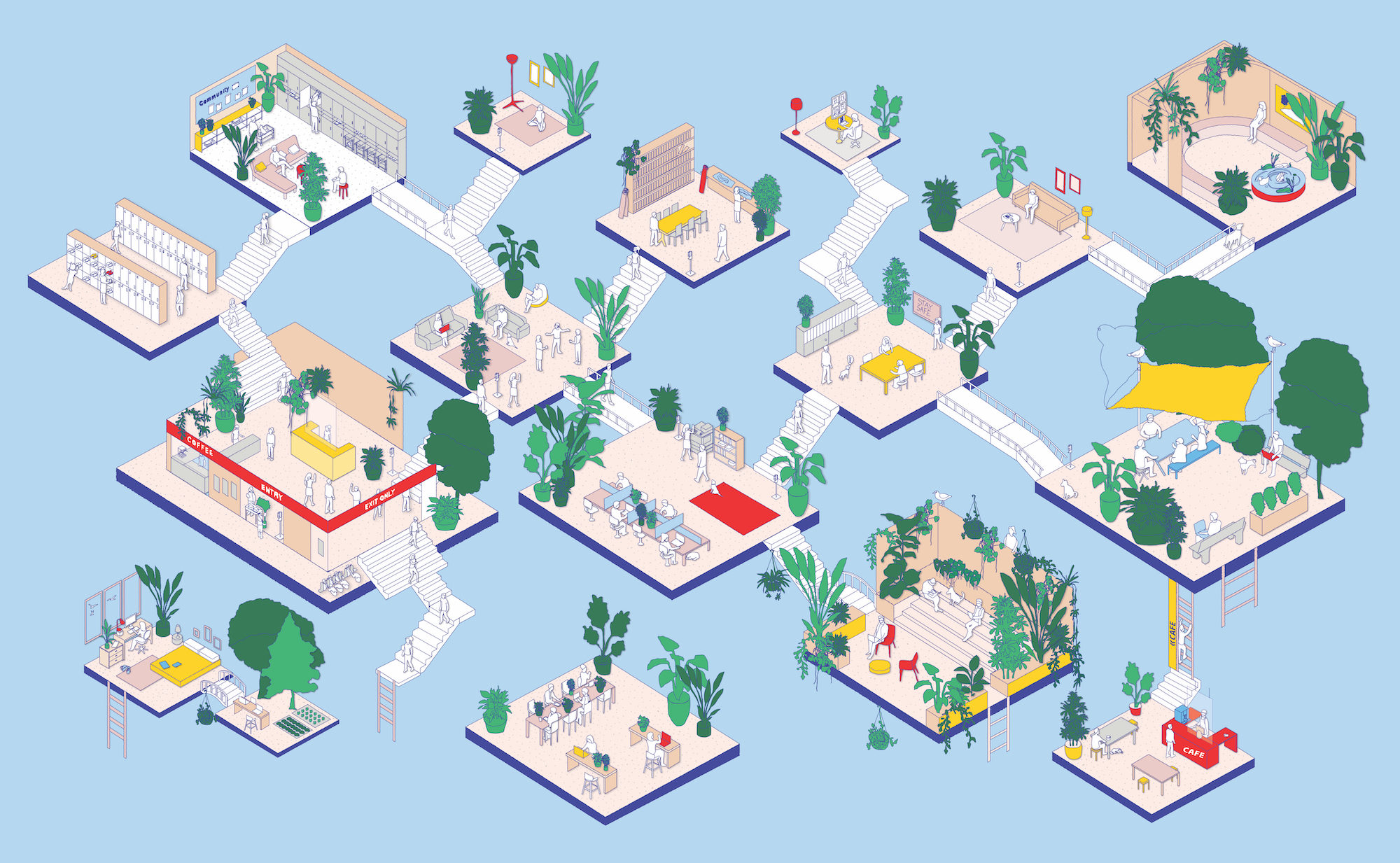
It’s time to get serious about our health—physical, mental, the health of our economy, culture, and planet. As a sobered workforce returns to the office (or adapts to a longer period of restrictions), the design of the future workplace becomes at once a statement of post-pandemic values and a vehicle for getting us where we want to go.
Resolved:
That the new office will recognize our collective responsibility to the common good and be structured to achieve large goals through a series of small choices.
That it will acknowledge the shortcomings of old workplace models and replace them with new archetypes that refresh and regenerate.
That we will build the capacity for change into every space, system, and project we design.
That the new office will articulate the aspirations of a new generation, their values, their priorities, and their future as they want it to be.
The rigid structures—physical and social—we thought essential to a work environment are more elastic than we knew. Do we have to go to the office every day? Do we have to sit at an assigned workstation according to a fixed work schedule? Months of working from home suggest maybe not. The quality of our work product and the quality of our lives, it turns out, benefit from individual agency over time and task. The future workplace will provide a framework for that agency.
Our futurists are learning that designs conceived to address specific pandemic issues often yield benefits unrelated to crisis mitigation—“public health” in the broader sense. We see a web of spaces that combine the open, communal transparency of the best pre-pandemic design with a heightened awareness of personal preference, wellness and social responsibility. Some of these spaces will likely be transitional, necessary only as long as public health requires—a Donning and Doffing Room, where employees can leave outerwear and change into indoor-use garments and shoes; Mobile Work Caddies for keeping personal desk accessories segregated and portable throughout the space; The Grove will offer various outdoor iterations in a work context; and The Audium, a space where employees can go to decompress.
The DISC (distance interaction sound concept) lamp is a result of the lockdown caused by the COVID-19 pandemic. It offers an elegant reimagining of what will be our New Normal communication. It provides a connected yet safe space for a communal working experience. The clean lines almost disappear allowing for the freedom of in-person meetings.
Need creates innovation. This situation shows how design and technology influence and change the world. With this digital “Zoom” age we accept that technology is creating better experiences than the physical and hence the physical needs to catch up to the beauty and seamlessness of the digital age. We need fewer but better physical things, higher performance, and more sustainable products.
Ideally this epidemic is a wake-up call from Mother Nature for us to think: about consuming less; to slow down and enjoy and appreciate our existence; to clean up the world; to manufacture locally; to farm locally and responsibly; to stop livestock farming; to have fewer children; to digitally work with far less travel; to eradicate toxins; to end political turmoil; to prioritize political spending; to end using paper; to end wars and military investments; to respect the earth and not take anything from it anymore like oil or trees; and to respect and love each other. We need to spread “Globalove,” not just for each other, but for our environment and our ecosystem.
"like this" - Google News
February 18, 2021 at 08:18AM
https://ift.tt/2NysseS
The Future of Work Might Look Like This - Surface Magazine
"like this" - Google News
https://ift.tt/2MWhj4t
Shoes Man Tutorial
Pos News Update
Meme Update
Korean Entertainment News
Japan News Update
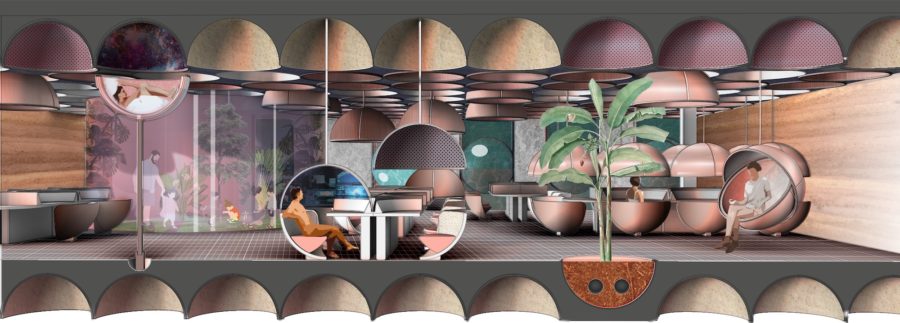
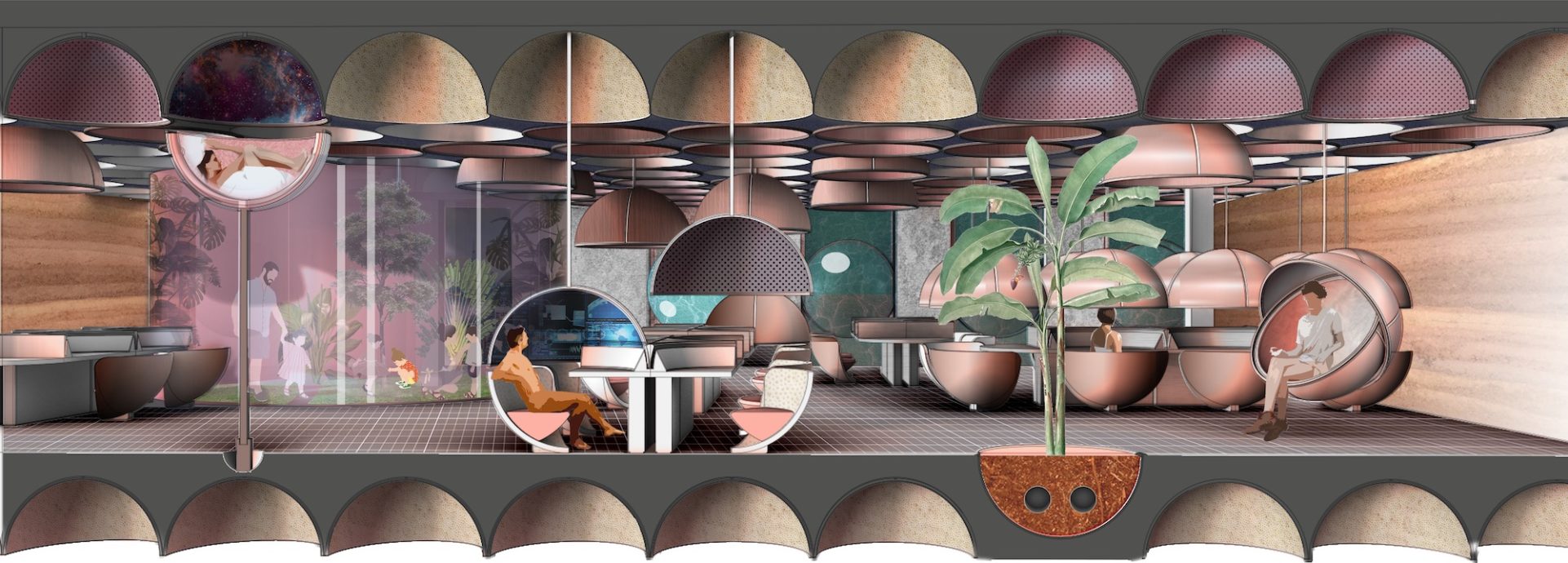


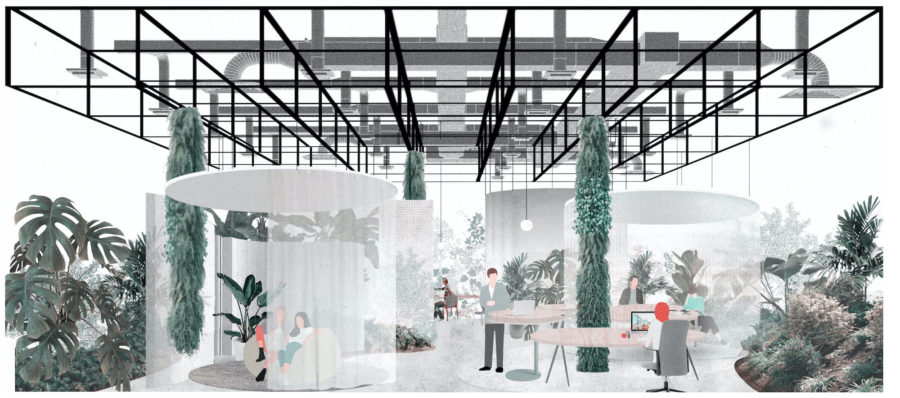











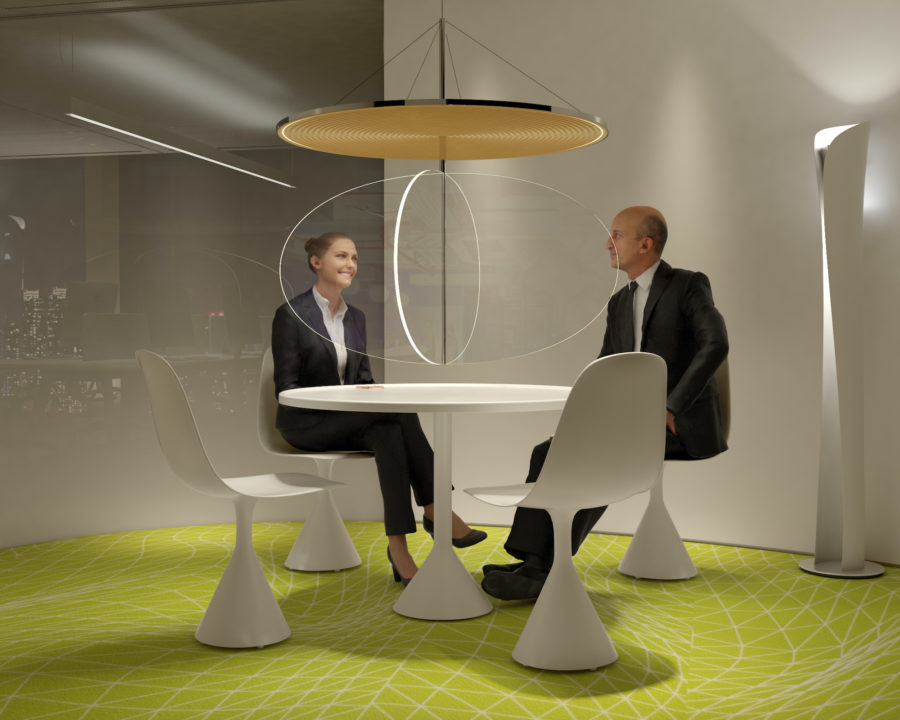




No comments:
Post a Comment